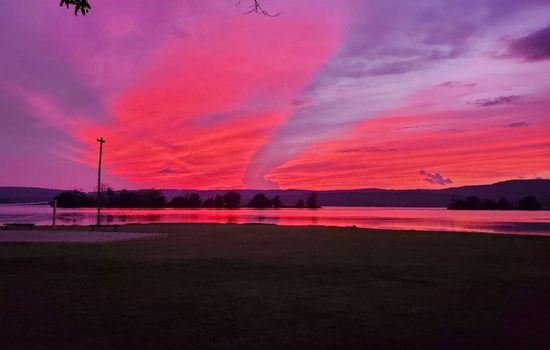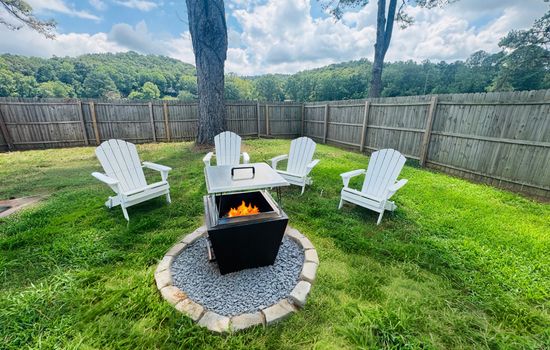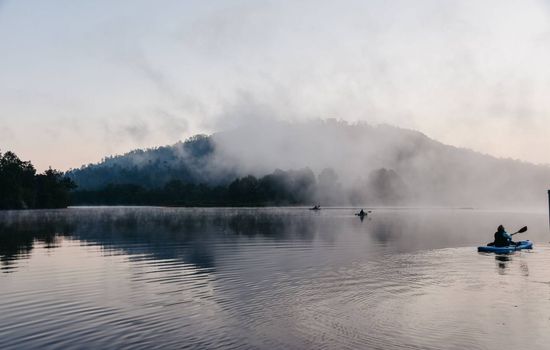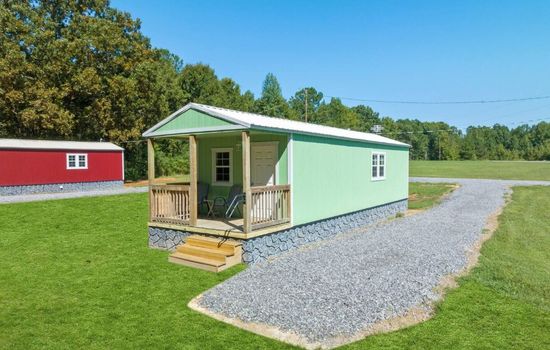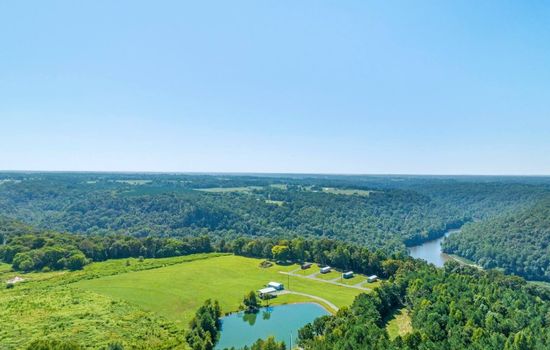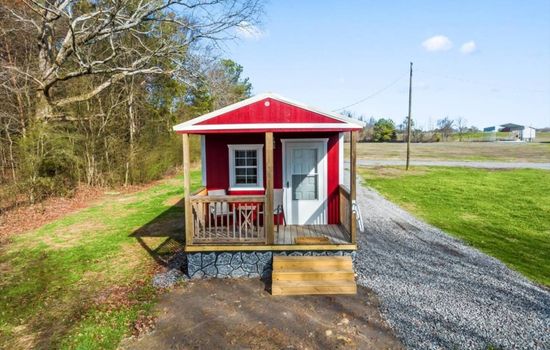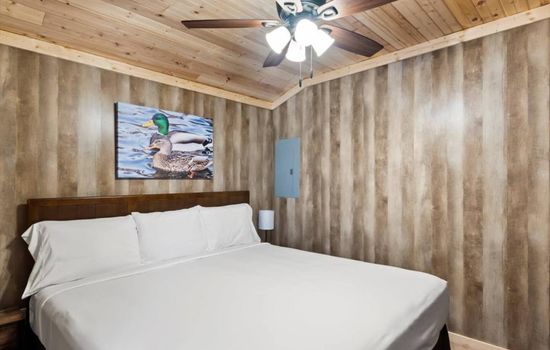The Little River Canyon Center is open 7 days a week from 10 AM to 4 PM. The preserve itself is open daily from 8 AM to 6 PM in spring and 7 PM in summer. Check the website for holiday hours.
The entrance fee at Little River Canyon National Preserve is $15 per vehicle for a day-use pass or $35 for an annual pass. An America the Beautiful/National Park Pass, which covers all US National Park Sites, is also available for $80.
From Fort Payne, take Alabama Highway 35 east for 10 miles, immersing yourself in the rugged beauty of one of the deepest canyons east of the Mississippi.
Park in designated areas only; no overnight parking. Daily pass for Canyon Mouth Park is $15. No specific RV or motorcycle restrictions mentioned. Parking lots are available near trails like the Little River Falls Overlook.
Accessibility & permits
Emergency
- Cell service availability:Partial
Information not accurate?
Help us improve by making a suggestion.
Tucked away in the rugged landscape of northeast Alabama, Little River Canyon National Preserve is a verdant oasis that beckons travelers to immerse themselves in its breathtaking beauty. Perched on the boundary of DeKalb and Cherokee Counties, this 15,288-acre preserve is a masterpiece of nature, featuring the deepest canyon east of the Mississippi River.
As you wander through the preserve, the Little River, often described as the nation’s longest mountaintop river, flows gently through a gorge carved over millions of years. The scenery is nothing short of spectacular, with breathtaking waterfalls cascading down rocky cliffs and serene picnic areas inviting you to linger. Hiking trails like the Little River Canyon Trail and the Beeswax Trail offer panoramic views of the canyon and the surrounding Lookout Mountain, while wooded paths lead you through a tapestry of rare and threatened plant species.
The preserve is home to a diverse array of wildlife, including white-tailed deer, wild turkeys, and a variety of bird species. Seasonal changes paint the landscape with vivid colors – the spring awakens with blooming wildflowers, summer brings lush greenery, autumn drenches the hills in golden hues, and winter wraps the canyon in a serene silence.
Nearby, DeSoto State Park complements the preserve with its own set of attractions, including historic cabins and lodges that offer cozy accommodations. The town of Fort Payne, with its quaint charm and local artisans, is just a short drive away, providing a perfect blend of natural beauty and cultural richness.
During the summer, visitors can enjoy ranger-led tours and educational programs that delve into the preserve’s unique ecology. For those seeking adventure, local outfitters offer kayak rentals and guided tours down the Little River, allowing you to experience the canyon from a different perspective.
- Area (mi²)
- 24
- Annual visitors
- 700 000
- Established year
- 1992
Top 3 Facts about Little River Canyon National Preserve
This canyon is one of the deepest in the eastern United States, measuring up to 500 feet from the edge of the cliffs to the river bottom, and features sandstone cliffs part of the Pottsville Formation, formed 320-286 million years ago.
In this verdant oasis, over 30 mammal species thrive, including white-tailed deer, bobcats, and river otters. The skies are alive with 147 bird species, from Eastern bluebirds to bald eagles. Clear waters host smallmouth bass, redeye bass, and sunfish, while forests shelter gray foxes, raccoons, and six bat species. Unique flora and fauna converge here, where the Cumberland Plateau meets the Gulf Coastal Plain, creating a thriving ecosystem that beckons nature enthusiasts and adventurers alike.
In the heart of the eastern United States, a dramatic canyon system unfolds, with depths reaching up to 500 feet. Here, a mountaintop river flows, its crystal-clear waters cascading over waterfalls and through a landscape of vibrant seasonal colors, from the blooming dogwoods of spring to the golden hues of autumn. The stark beauty of winter reveals intricate icicle formations, while summer brings a lush canopy and wildflowers. This natural spectacle is a testament to the region’s unique geological and ecological richness.
Family programs
- Junior Ranger
- Ranger-led Tours
- Workshops & Hands-on Activities
- Scavenger Hunts
- Family Camping & Overnight
- Volunteer & Stewardship
- Youth Conservation
- Scouting Partnerships
- Virtual Junior Activities
- Arts & Crafts
- Water-based Adventures
Travel Tips
Plan Ahead
Plan a few days in spring for optimal waterfall views. Arrive via private vehicle, park at scenic overlooks, and visit the visitors center. Anticipate rocky terrain, pack meals, and rest often. Enjoy the scenic drive and hiking trails during the blooming season.
Pack Appropriately
Pack layers for variable weather, sturdy footwear, and a backpack with essentials like water, snacks, sunscreen, and a first aid kit. Bring camping gear for extended stays and check the season for specific necessities.
Respect Wildlife
Keep a safe distance from wildlife, at least 25 yards, and avoid feeding them. Stay on designated trails, dispose of trash properly, and use binoculars for closer views without disturbance. Respect the environment as you would your own backyard.
Stay Informed
Stay informed about weather, fire restrictions, and trail conditions. Wear appropriate footwear, bring ample water and sunscreen. Exercise caution on trails, ledges, and near water. For emergencies, call park authorities at 911 or the park’s emergency number. Respect terrain and wildlife.
Seasons
In spring, as temperatures rise to the 60s and 70s, vibrant green leaves, red bud, and dogwood blooms transform the landscape. Join the Canyon Spring Fest, featuring a Children’s Spring Art Show, and enjoy mild weather perfect for hiking, kayaking, and picnics amidst blossoming wildflowers. Ideal for outdoor enthusiasts.
Summer brings warm temperatures (80s-90s°F) and occasional thunderstorms, making it ideal for hikes and picnics. Enjoy Canyon Fest in June, featuring live music, arts, and nature activities. Free and family-friendly, with great food and vendors. Perfect for outdoor enthusiasts.
Experience autumn’s vibrant hues from September to November, with mild temperatures (60s-70s°F) and scenic drives. Witness the flight of red-tail hawks at Hawks Glide Overlook, a surreal highlight of the season. Ideal for leaf peeping and serene hikes.
Winter, from December to February, brings mild temperatures (50s-30s°F) and occasional frost. While it’s less crowded, the chill and potential for freezing nights make it a season for the hardy and prepared traveler.
Information not accurate?
Help us improve by making a suggestion.
Where to stay
Frequently Asked Questions
Ready to dive into what Little River Canyon National Preserve has to offer? Let’s tackle some of the burning questions you might have as you plan your visit!
-
The closest city to Little River Canyon National Preserve is Fort Payne, Alabama, which is about 15 minutes away. Chattanooga, Tennessee, is the closest major city, located about 57 miles north.
-
The Path to Learning Trail is the best hiking trail for kids. It is a short, 0.5-mile loop located behind the visitor center, with a flat and easy path that includes four kid-friendly exhibits on plants, animals, geology, and human occupation. This trail is suitable for families with small children and offers benches and a log cabin from 1832.
-
Yes, you must keep your dog on a leash no longer than 6 feet at all times. Retractable leashes that extend beyond 6 feet are not allowed. Your dog must also wear a collar with current tags and cannot be left unattended.
-
There is a parking fee only at Canyon Mouth Park, which is $15 per vehicle for day-use. This fee applies to all vehicles, including cars, camper vans, trailers, and motorhomes. No fees are charged for parking in other areas of the preserve.
-
Hike over 26 miles of trails or explore 20 miles of backcountry roads. Visit the Little River Falls overlook and Lynn Overlook for stunning views, and check out Umbrella Rock. Enjoy a picnic and a gentle hike at Canyon Mouth Park, or cool off at the Blue Hole swimming area. If time allows, go kayaking or canoeing in the winter and spring when the river is fuller.

